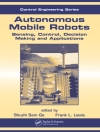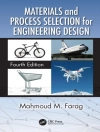- Discusses developments in good agricultural practice from crop growth models to improved water and nutrition management;
- Reviews advances in understanding plant physiology and genetic diversity as well as their contribution to improvements in breeding;
- Summarises recent research on diseases and pests as well as their control through developing disease-resistant varieties or integrated weed management
表中的内容
Part 1 Cultivation techniques
1.Modelling crop growth and yield in tomato cultivation: Kenneth J. Boote, University of Florida, USA;
2.Optimizing yields in tomato cultivation: maximizing tomato plant use of resources: V. S. Almeida, F. T. Delazari, C. Nick, W. L. Araújo and D. J. H. Silva, Universidade Federal de Viçosa, Brazil;
3.Improving water and nutrient management in tomato cultivation: E. Simonne, M. Ozores-Hampton, A. Simonne and A. Gazula, University of Florida, USA;
4.Organic greenhouse tomato production:Martine Dorais, Agriculture and Agri-Food Canada, Laval University, Quebec, Canada;
Part 2 Plant physiology and breeding
5.Understanding and improving water-use efficiency and drought resistance in tomato: A. Zsögön, Universidade Federal de Viçosa, Brazil; and M. H. Vicente, D. S. Reartes and L. E. P. Peres, Universidade de São Paulo, Brazil;
6.Ensuring the genetic diversity of tomatoes: Andreas W. Ebert and Lawrence Kenyon, AVRDC – The World Vegetable Center, Taiwan;
7.Tomato plant responses to biotic and abiotic stress: C. A. Avila, S. C. Irigoyen and K. K. Mandadi, Texas A&M Agri Life Research, USA;
8.Developments in tomato breeding: conventional and biotechnology tools: Y. Bai, Wageningen University and Research, The Netherlands;
9.Advances in marker-assisted breeding of tomatoes: Junming Li, Institute of Vegetables and Flowers – Chinese Academy of Agricultural Sciences (CAAS), China;
10.Genetic engineering of tomato to improve nutritional quality, resistance to abiotic and biotic stresses, and for non-food applications: B. Kaur and A. K. Handa, Purdue University, USA; and A. K. Mattoo, USDA-ARS, USA;
11.Developing tomato varieties with improved flavour: M. Causse, E. Albert and C. Sauvage, INRA, France;
12.Understanding and improving the shelf life of tomatoes: K. Wang and A. K. Handa, Purdue University, USA; and A. K. Mattoo, USDA-ARS, USA;
Part 3 Diseases, pests and weeds
13.Insect-transmitted viral diseases infecting tomato crops: H. Czosnek, Hebrew University of Jerusalem, Israel; A. Koren, Hishtil Nursery, Israel; and F. Vidavski, Tomatech R&D, Israel;
14.Genetic resistance to viruses in tomato: Moshe Lapidot and Ilan Levin, Institute of Plant Sciences – Volcani Center, ARO, Israel;
15.Bio-ecology of major insect and mite pests of tomato crops in the tropics: R. Srinivasan, AVRDC – The World Vegetable Center, Taiwan;
16.Integrated pest management in tomato cultivation: Robert L. Gilbertson, Marcela Vasquez-Mayorga and Mônica Macedo, University of California-Davis, USA; and R. Muniappan, Virginia Tech, USA;
17.Developing disease-resistant tomato varieties: D. R. Panthee, J. P. Kressin and P. Adhikari, North Carolina State University, USA;
18.Integrated weed management in tomato cultivation: Francesco Tei and Euro Pannacci, University of Perugia, Italy;
关于作者
Dr Kenneth Boote is Emeritus Professor in the Department of Agronomy at the University of Florida, USA. He is widely regarded as a pioneer in crop modelling, helping to develop the DSSAT software application program that simulates growth for over 40 different crops. He is presently serving as Co-Lead for Crop Modeling in Ag MIP, the global Agricultural Model Intercomparison and Improvement Project. Amongst his many distinctions, Professor Boote is a Fellow of the American Association for the Advancement of Science, the Crop Science Society of America and the American Society of Agronomy.












